The Smoking Gun: "Government Agency Build Everything" . GTFOH
Franklin Delano Roosevelt's dedication to U.S. infrastructure, a "new deal for the American people" as he described it, united the United States of America.
Roads were built where there once was only dirt. Bridges connected lands that were once separated.
Airports and runways made people airborne. Power lines brought light where there once was only darkness after sunset. And most importantly, the unemployed were once again hard at work. It was the greatest infrastructure project in this country's history, the likes of which we'll never see again.
But eight decades later, America's arteries of transportation, responsible for the lifeblood of our economy and way of life, are crumbling. Years of neglect, political gamesmanship, short-sightedness, economic tightening, and budgetary indecision threaten the accomplishments of a generation of hard-working Americans—from the smallest roads to the largest dams.
"It's all falling into ruin now because we decided we didn't have to maintain it," says Gray Brechin, geographer and founder of the online archive The Living New Deal, "Thank god, they built it all as well as they did."
During the recent presidential campaign, President Donald Trump made a promise to reinvest in America's infrastructure. In fact, the topic was one of the few pieces of actual policy mentioned during his victory speech. But even the trillion dollars he's pledged would only partially make up the gap to get to $3.6 trillion—that's what the American Society of Civil Engineers estimated in 2013 would be needed by 2020 to rebuild America.
As this new administration takes office, it's worth looking back at the last time American infrastructure saved the country.
Crowd, People, Photograph, Monochrome, Monochrome photography, Black-and-white, Audience, History, Vintage clothing, Rebellion,
pinterest icon
Wall Street on Black Tuesday, October 29, 1929.
PhotoQuest//Getty Images
Reshaping a Nation
When the stock market crashed on October 29, 1929, it was, as Nick Taylor wrote in his book American-Made: The Enduring Legacy of the WPA, "the greatest crisis in [America's] history short of war."
At the height of the Great Depression, 24 percent of the American workforce was unemployed. Half of the country's banks failed, and the gross national product decreased by nearly half as suicides increased by the largest rate ever recorded. Riots erupted across America, sometimes aimed at immigrants who were accused of taking jobs. Revolt was a real and growing concern.
Considering the sad state of the country, the 1932 presidential election was a predictable landslide, with Franklin Delano Roosevelt routing incumbent Herbert Hoover and his belief in limited government spending during a financial crisis. A Democratic majority would also fill both houses of Congress.
"Very few people today realize how close the country was on the verge of a second civil war...The New Deal was largely designed to make sure that didn't happen."
On Inauguration Day, March 4, 1933, FDR told the nation that they had "nothing to fear but fear itself." Then, reportedly within hours, he embarked on what is considered the greatest first 100 days (well, actually 105) in American presidential history. He pushed 15 major bills through the Democratic-held Congress, among them was the establishment of the Tennessee Valley Authority (TVA), the Public Works Administration (PWA), and the Civilian Conservation Corps (CCC), which were all designed to get people back to work by building federally funded infrastructure projects. As President Roosevelt had promised on the campaign trail, it was a new deal for the America and its citizens.
"Very few people today realize how close the country was on the verge of a second civil war or a revolution in 1933," says Brechlin, "The New Deal was largely designed to make sure that didn't happen."
FDR's New Deal programs were based on a inherently progressive belief system—that the government had an obligation to its citizens. "You needed to give people jobs," historian and author Nick Taylor told Popular Mechanics. "Ones that not only provided income but dignity of work."
So in Roosevelt's America, digging a drainage ditch was not just a job, but the workers' contribution to making their community, and in turn the country, a better place. Building a school wasn't just a way to make an income, but investing in the next generation. Damming the local river wasn't only improving one's lot in life, but also providing electricity to help one's neighbors. "(Roosevelt) had a comprehensive moral vision to improve the United States," says Brechin, "and to save democracy."
Tire, Wheel, Motor vehicle, Mode of transport, Automotive tire, Auto part, Automotive wheel system, Rural area, Working animal, Tread,
pinterest icon
WPA workers rebuilding Morris Canal.
MPI//Getty Images
A Workforce of Millions
The establishment of the Works Progress Administration (WPA) by presidential act in 1935 was the crowning jewel of the New Deal. Led by the ambitious and pragmatic Harry Hopkins, the WPA's original intention was to be a jobs program, meant to put millions of people back to work. But with Hopkins at the helm and FDR's support, the WPA became much more.
Unlike the majority of PWA and CCC proposals, all WPA projects were requests from local and state governments and had to be submitted for approval. The deal was that the federal government would pick up a big chunk of the project's tab, provided it was of public interest and employed the maximum amount of people. As archivist Bill Creech explains, "The basic idea [was] to use local materials and as much of the out-of-work local workforce as possible."
This initially led to small, localized tasks like roads, bridges, schools, community parks, and drainage ditches. But Hopkins believed that the WPA could do more with a workforce that reached nearly 3.2 million by 1938. Oregon's Timberline Lodge, the Riverwalk in San Antonio, and New York's LaGuardia Airport are just a few of the iconic and soaring projects that have come to best exemplify the efforts of the WPA.
The overall numbers are staggering. According to statistics compiled in American-Made, the agency covered the U.S. with 650,000 miles of road, built 78,000 bridges, erected 125,000 civilian and military buildings, and constructed or improved 800 airports. More than infrastructure, the laborers of the WPA worked in schools, serving up 900 million hot lunches to hungry children and operated 1,500 nurseries.
Font, String instrument accessory, Advertising, Poster, Illustration, Graphic design, Graphics, Artwork, Folk instrument, String instrument,
pinterest icon
WPA posters promoting the arts.
Getty Images
They also provided arts and culture, putting on 225,000 concerts, plus thousands of plays, circuses, and puppet shows. They produced nearly half a million works of art, including ones painted by Jackson Pollock. The WPA's Federal Writers' Project wrote 276 full-length books, featuring pieces from soon-to-be famous writers John Steinbeck and May Swenson.
"[The WPA] brought the American infrastructure into the 20th century," says Taylor.
A 21st Century Dilemma
More than 80 years later, that blossoming of American potential is in decay.
To put it plainly, the U.S. failed to adjust investment in infrastructure with the country's growing population. In 1933, the U.S. population was 125.6 million. Today, that number stands at 324.3 million and growing. That means more cars, more roads, and more bridges. But infrastructure hasn't seen a serious commitment of resources for at least 60 years, dating back to Eisenhower's National Interstate and Defense Highway Act of 1956.
Stories about infrastructure always talk about how it's not a "sexy" way to spend taxpayer money. That's surely one factor that contributes to the disconnect between its important to America and the amount we're willing to spend on it. According to the ASCE, the No. 1 problem is surface transportation—in other words, roads, bridges and highways. Millions drive them every day to and from work, and the ASCE says that subpar roads cost the American economy more than $100 billion in wasted fuel and time every year. Despite these hefty numbers, funding on the local, state, and federal levels are too often delayed or forever in limbo.
The ASCE's Brian Pallasch cites Virginia's recent battles to widen its interstates as the perfect example. It took nearly a decade, several governors, and a near-crisis for any solutions to finally be enacted. The federal government shoulders much of the blame as well, including December's federal budget temporary spending bill that stretches until April. This temporary bill freezes the planned increase for surface transportation funding at last year's levels and limits the fed's ability to partner with localities on projects. "(States) are not going to commit to building a $100 million bridge if there's no certainty that the federal partner is going to be there," says Pallasch, "You can't plan a bridge in three-month increments. That's not how that works."
One of ASCE's major recommendations for funding is to raise the fuel tax from its 1993 level of 18.4 cents—of which 18.3 cents goes into the Highway Trust Fund. Despite inflation, gas price increases, and the drop in purchasing power, the fuel tax has stayed the same for nearly a quarter of a century when President Bill Clinton signed the hike into law.
This content is imported from youTube. You may be able to find the same content in another format, or you may be able to find more information, at their web site.
Watch on
This is an image
The Roads and Bridges Ahead
During the campaign, Trump spoke of a one trillion dollar, 10-year infrastructure plan that would rely heavily on the private sector. It was met with mixed responses, but from the ASCE's point of view, "it's a significant and credible start to addressing the problem," says Pallasch. He explains that there is certainly a role for the private sector in a partnership between federal, state, and local governments in financing the improvements to America's infrastructure. Because many of these projects would be difficult to monetize, he's skeptical that private companies will be able to fix everything.
It's mostly impossible to recreate a New Deal for a new century. America was a much, much different place in 1933. It was significantly more rural, there were far fewer people, and unemployment was at record highs. It was also poorer, less hopeful, and a much larger need to create new infrastructure rather rebuilding what already existed.
But it was during this moment of country-wide despair when then-New York governor Franklin D. Roosevelt stepped to the podium as the commencement speaker for Oglethorpe University's 1932 graduating class, and gave advice that now reaches down through history. In his speech, he told the onlooking flock of soon-to-be graduates that "the country needs... demands bold, persistent experimentation...it is common sense to take a method and try it: If it fails, admit it frankly and try another. But above all, try something." Although America's new dilemma is far from similar, the answer remains the same.
9 New Deal Infrastructure Projects That Changed America
The Hoover Dam, LaGuardia Airport and the Bay Bridge were all part of FDR's New Deal investment
Lincoln Tunnel construction
The New Deal was a massive effort to lift the United States out of the Great Depression on several fronts.
President Franklin D. Roosevelt’s plan created the Social Security Administration to protect older Americans financially, and used the Agricultural Adjustment Act to help farmers get out of debt.
The New Deal also created new agencies to fund projects across the country that both improved communities and provided jobs at a time when unemployment was high.
During the 1930s, the Public Works Administration, Works Progress Administration (later named the Work Projects Administration) and other New Deal agencies funded projects to build and improve the country’s infrastructure, including roads, dams, schools, airports and parks. Many of the projects funded by the PWA and WPA remain part of the U.S. landscape. Here are nine projects that show how transformative the New Deal was for America.
1. Hoover Dam
This is a modal window.
Something went wrong while setting up a Google DAI stream.
Hoover Dam: True Giant
Although planning for the Hoover Dam, or “Boulder Canyon project,” started in the 1920s, it was completed with an infusion of funds from the PWA and dedicated in 1935. Its official name changed to “Hoover Dam” during Herbert Hoover’s presidency, but was still known as “Boulder Canyon Dam” and “Boulder Dam” into the 1930s and ‘40s.
The Hoover Dam is located in the Colorado River’s Black Canyon, on the border between Nevada and Arizona. At the time of its completion, it was the tallest dam in the world. Today, it generates enough hydroelectric power per year to serve 1.3 million people.
2. Triborough Bridge
Triborough Bridge construction, New Deal infrastructure projects
George Rinhart/Corbis/Getty Images
The giant Triborough bridge, really four bridges in one, was financed with a PWA grant of $44,200,000, Shown is the view of the bridge under construction across Hell Gate. The finished bridge connects the boroughs of Manhattan, the Bronx and Queens.
One of the major construction projects the PWA helped finance was the New York City’s Triborough Bridge (now the Robert F. Kennedy Bridge), which connected Manhattan, Queens and the Bronx.
The powerful New York City official Robert Moses led construction of the bridge, which opened in 1936. At the dedication ceremony, FDR placed the bridge within the larger context of New Deal projects, saying, “People require and people are demanding up-to-date government in place of antiquated government, just as they are requiring and demanding Triborough Bridges in the place of ancient ferries.”
3. San Antonio River Walk
This is a modal window.
Something went wrong while setting up a Google DAI stream.
Franklin D. Roosevelt's New Deal
In the late 1930s, the city of San Antonio secured funding from the WPA to improve infrastructure along the San Antonio River. The city used this money to build bridges and pathways that made the area more walkable and allowed businesses to move into the area. Today, the River Walk is a major commercial and tourist hub for the city.
4. LaGuardia Airport
North Beach Airport under construction, now known as LaGuardia Airport
Leroy Jakob/NY Daily News Archive/Getty Images
North Beach Airport, now known as LaGuardia Airport, is shown under construction.
The WPA funded the construction or improvement of roughly 800 airports, and one of the biggest ones the WPA helped build was LaGuardia Airport in Queens, New York. When it opened in 1939, it was known as New York Municipal Airport. Later, the city changed the named to honor Fiorello La Guardia, who was New York City’s mayor when the airport opened.
In addition to buildings and roads, the WPA also funded works of art, including a mural that artist James Brooks painted inside the Marine Air Terminal.
5. Chickamauga Dam
This is a modal window.
Something went wrong while setting up a Google DAI stream.
Tennessee Valley Authority - Nature's Power Harnessed
In 1933, New Deal legislation created a public corporation to improve the Tennessee Valley. One of the biggest projects that this corporation, the Tennessee Valley Authority, took on was the Chickamauga Dam, located on the Tennessee River outside of Chattanooga.
Before the dam’s completion in 1940, the surrounding region frequently suffered from expensive flood damage and mosquito-borne illnesses like malaria and yellow fever. By controlling the river’s water levels, the dam has prevented billions of dollars in flood damage. It also helped reduce mosquito populations in order to fight the diseases they spread.
6. Lincoln Tunnel
Lincoln Tunnel construction, New Deal infrastructure projects
R. L. Nesmith & Associates/FPG/Archive Photos/Hulton Archive/Getty Images
High angle view from the ventilation shaft of the Midtown Hudson Tunnel, the Public Works Administration's (PWA) $37,500,000 project in New York City, c. 1935.
Yet another New York City project that the PWA helped fund was the Lincoln Tunnel. The tunnel’s center tube opened for traffic in 1937, allowing drivers to travel between New York and New Jersey under the Hudson River. Later, workers added two other tubes: the north tube in 1945, and the south tube in 1957.
7. New Orleans City Park
This is a modal window.
Something went wrong while setting up a Google DAI stream.
The 1930s
Using WPA funding, New Orleans improved its City park in the 1930s by building sidewalks, bridges and an art museum. This construction likely provided work to tens of thousands of people during the Great Depression, and also benefited residents by providing them with an improved public space.
8. Bay Bridge
Bay Bridge construction, New Deal infrastructure projects
Underwood Archives/Getty Images
The construction of the cantilever section of the San Francisco-Oakland Bay Bridge looking towards Oakland from Yerba Buena Island, San Francisco, California, 1936.
The San Francisco-Oakland Bay Bridge was a project of the Reconstruction Finance Corporation, an agency that started under Hoover but became part of FDR’s New Deal efforts to improve the country’s infrastructure. Construction began in 1933 and the bridge opened in 1936. With its eight-mile span, the Bay Bridge was at that time the longest bridge in the world.
9. Arroyo Seco Parkway
Arroyo Seco Parkway
Dick Whittington Studio/Corbis/Getty Images
Aerial view of Hollywood Freeway crossing over the Pasadena Freeway downtown, Los Angeles, California.
The New Deal was also responsible for the first freeway. Both the PWA and the WPA helped fund the construction of Arroyo Seco Parkway—now known as the Pasadena Freeway or 110—which connected Los Angeles to Pasadena. The freeway opened to traffic between 1938 and 1940, and reduced travel between L.A. and Pasadena from 27 to 12 minutes.
Standing the test of time: 5 iconic New Deal structures that ...
Works Progress Administration (WPA)
"The Needy Doing Something Useful: The WPA Goes to Work"
by Dr. Douglas Carl Abrams
Reprinted with permission from the Tar Heel Junior Historian. Fall 2003.
Tar Heel Junior Historian Association, NC Museum of History
Millions of Americans found themselves without jobs in April 1935, about six years after the stock market crash. President Franklin Delano Roosevelt and Women making rugs on a loom.Women making rugs in Durham County, c. 1934. Courtesy of the North Carolina State Archives.Congress created a New Deal agency called the Works Progress Administration (WPA), with plans to hire 3.5 million people nationally at a cost of $5 billion. After two years of “direct relief,” or grants of money not tied to working, the federal government was switching to “work relief,” paying people to work on projects for agencies like the WPA. States took over public welfare programs.
Between 1935 and 1940, the WPA in North Carolina employed 125,000 men and women of all races, completed 3,984 projects, and touched the lives of nearly everyone in the state. The WPA’s purpose was to provide a variety of jobs for the unemployed during the Great Depression.
In New Bern, 37 women worked in sewing rooms for $32 a month making things like rugs and clothing. About 70 percent of these skilled laborers provided the only source of income for their families. The WPA’s Federal Music Project, for musicians without work, organized 18 African American choral groups in the state. The president and his wife, Eleanor, selected the North Carolina Negro Chorus to perform at the White House on June 8, 1939, in a concert honoring the king and queen of England. For two years, the North Carolina Federal Theater Project participated in the outdoor drama in Manteo, The Lost Colony. In 1939 the Federal Writers’ Project in the state produced two books: North Carolina: A Guide to the Old North State, which employed about 100 people for three years to describe and map parts of the state and its history, and These Are Our Lives, designed to include stories about “common southern folk.” The WPA hired artists to paint murals in public spaces like post offices, and its National Youth Administration aided needy young people with training and campus jobs.
Most WPA workers, however, were men—working outdoors to build schools, housing for public school teachers, armories, stadiums, swimming pools, gyms, community halls, hospitals, sewers, and even outdoor toilets, or “privies.” The workers built miles of roads and bridges. In addition to sewing rooms, the WPA provided jobs for women in school lunch programs, libraries, nursery schools, and literacy classes.
Senator Josiah W. BaileySenator Josiah W. Bailey, Democrat of N.C., 3-15-40. Courtesy of the Library of CongressToday some people oppose the federal government’s stimulus package to help the economy. In the 1930s, not everyone supported the WPA. Opponents, like North Carolina’s United States senator Josiah Bailey, argued that the program cost too much money and would mean higher taxes. They believed it did not solve the problem of unemployment. What would happen when these jobs, created by the federal government, ended? How much should the government pay WPA workers? If people made more money work-ing for the agency than working on a farm or in a factory, businesspeople and farmers would have a hard time getting the workers they needed. After much debate, Congress agreed that the WPA would not pay more than typical jobs in business and industry.
Politicians fought over who would control the WPA, which would spend a lot of money and hire a lot of people. The federal government ran the WPA from Washington, D.C. Harry Hopkins, the national director, however, worked with the North Carolina congressional delegation to choose projects and hire personnel. Politicians, seeking greater influence with the WPA, fought over the selection of a state director. North Carolina congressman Robert L. Doughton—powerful head of the House Ways and Means Committee—and Senator Bailey successfully pushed for George Coan, mayor of Winston-Salem since 1929. A graduate of Davidson College and Harvard University, Coan had worked for Reynolds Tobacco Company but had been a strong Roosevelt supporter. Battles over the appointment of other officials in the state WPA distracted Coan for much of 1935. The effort to create jobs lagged behind that of other southern states. Coan complained that Hopkins had not given North Carolina enough money for its relief needs. The state was not receiving its fair share based on population, Coan said.
Leaders in Washington feared that, with large sums of money to spend, state WPA officials might become corrupt. They might give money to the jobless or state officials, in return for support and votes on election day. Although the WPA banned some political activities, state WPA officials and politicians violated those policies. The agency—with thousands of employees—could influence elections. In the 1936 Democratic gubernatorial primaries, Coan actively supported Clyde Hoey after former governor O. Max Gardner promised Coan the chairmanship of the State Highway Commission. Gardner gave Coan $25,000 to distribute in WPA districts, and Coan provided Gardner with a list of key WPA personnel in the state. Senator Bailey also used lists of WPA personnel in his 1936 reelection campaign. Some states, like Indiana, did a better job than North Carolina of keeping politics out of relief programs. Other states had much worse records. In 1939 Congress passed the Hatch Act limiting political activities of federal employees, such as those in the WPA. Most of those restrictions still apply today.
As the Depression continued, the WPA faced growing opposition within the state. After his reelection in 1936, Bailey attacked the New Deal. He particularly targeted the WPA, which he blamed for competing with business for workers and weakening its participants’ work ethic. Some Tar Heels joked about the WPA’s rate of work—claiming, for instance, that WPA stood for “We Poke Along.” In 1937 Bailey fought against the agency’s getting more money. He demanded that the federal government adopt a balanced budget and completely turn over the task of helping the unemployed to state and local governments. Bailey claimed that southern states, like North Carolina, did not receive their fair share of the funds. He thought the WPA was sending too much help to urban areas.
George CoanGeorge Coan. Courtesy of the city of Winston Salem.After two years, the North Carolina WPA declined dramatically. In August 1937, employing only 18,600 workers (compared to more than 40,000 the previous year), it spent $706,000 in the state, down from the $1.2 million spent in August 1936. To cut costs, Coan closed district offices in September 1937 and operated the WPA from one Raleigh office. The WPA rebounded briefly when the economy worsened in late 1937 to early 1938; Congress in June 1938 significantly increased its funds. By that October, the state WPA peaked, with 55,000 workers. In 1939 the agency began its final decline, and Congress renamed it the Works Projects Administration. By 1940, Roosevelt focused increasingly on World War II, which had begun in Europe. He reduced the size of the WPA. The war jump-started the economy, and relief became less critical.
Coan resigned as the state WPA director to return to private business. Governor Hoey refused to appoint him chairman of the State Highway Commission, after all, because of Coan’s closeness to Bailey and Doughton. Coan had served three and a half years, spent $60 million, and helped an average of 40,000 North Carolinians a year get WPA jobs. While he had mixed politics and relief, he kept the agency free of financial scandal.
Although North Carolina ranked last in the country in per-person WPA spending, the agency did make life better for many people. One grateful mother of eight could speak for thousands of other Tar Heels when she said, “If it hadn’t been for the WPA I don’t know what we would have done.” Her husband earned $18.50 every two weeks working in a WPA printery. Without that income, the family had sometimes gone hungry. The WPA changed the political and the physical landscape. It left a legacy that government can help people in need, and its surviving projects offer a physical reminder of that legacy.
*At the time of this article’s publication, Dr. Douglas Carl Abrams was teaching history and supervising student teachers at Bob Jones University, where he also chaired the Department of Social Studies Education. He is the author of Conservative Constraints: North Carolina and the New Deal and Selling the Old-Time Religion: American Fundamentalists and Mass Culture, 1920–1940.
References and Additional Resources
American life histories: Manuscripts from the Federal Writers' Project, 1936-1940. Library of Congress, Washington, DC, USA. http://lcweb2.loc.gov/wpaintro/wpahome.html
Born in slavery: Slave narratives from the Federal Writers' Project, 1936-1938. Library of Congress, Washington, DC, USA. http://international.loc.gov/ammem/snhtml/snhome.html
By the People, for the People: Posters from the WPA. Library of Congress, Washington, DC, USA. http://memory.loc.gov/ammem/wpaposters/wpahome.html
Interactive periodic table of the New Deal. Franklin D. Roosevelt Presidential Library and Museum. Hyde Park, NY, USA. http://lxfdrweb.it.marist.edu/education/resources/periodictable.html
NC Digital Collections resources on the WPA
New Deal for the arts. National Archives, Washington, DC, USA. http://www.archives.gov/exhibits/new_deal_for_the_arts/index.html
Resources on the WPA in North Carolina in libraries [via WorldCat]
Works Projects in North Carolina, 1933-1941. North Carolina State Archives, Raleigh, NC, USA. http://exhibits.archives.ncdcr.gov/wpa/
Image Credits
George Coan. Courtesy of the City of Winston Salem. http://206.219.100.220/default.aspx?mod=Article&id=2942
Harris & Ewing. Senator Josiah W. Bailey, Democrat of N.C., 3-15-40. Reproduction # LC-DIG-hec-28344. Library of Congress Prints and Photographs Division Washington, DC, USA. http://www.loc.gov/pictures/item/hec2009015041/
Women making rugs in Durham County, c. 1934. NC Women's Work Center Emergency Relief Administration, NCERA Photographs, 1934-1936, Box 142. North Carolina State Archives, Raleigh, NC, USA. http://exhibits.archives.ncdcr.gov/wpa/women.htm
FDR’s Legacy: 5 New Deal Infrastructure Projects in NYC
Laguardia Airport marine terminal
Julio Yarce Julio Yarce
share
New York City’s public infrastructure can be taken for granted if the history of the city is not often revisited. Many important infrastructure projects in New York City, such as the Lincoln Tunnel, La Guardia Airport, the Brooklyn-Battery Tunnel, Flushing Meadows Park, and the restoration of Bryant Park, are the legacy of the New Deal (1933-1939). During this current moment of crisis for urban living, with a renewed flight to the suburbs, brought about by the COVID-19 pandemic, it is important to look at how many of New York’s most impressive infrastructure projects are the product of an era when the government rose to take a proactive role, as President Franklin D. Roosevelt (1882-1945) did with the New Deal.
FDR making opening day speech at 1939 World's Fair
FDR at the opening day speech of the World’s Fair on this date in 1939. Photo from NYPL Digital Collections.
Recent gridlocked debates in Washington D.C. over the funding for national infrastructure expansion expose one of the most enduring divides in American history: the rural-urban divide. This divide is not new, as some prefer to believe, but it is rather deep and historically significant. It defines two different forms of social, cultural, and economic organization that date back to the European settlement of North America. The key to Roosevelt’s political success was his capacity to reconcile and address the material needs of both rural and urban Americans.
The Rural-Urban Divide
Since the European settlement of the United States during colonial times, the ideal image of the country was that of an agrarian society of family farms. Agrarianism served to justify the conquest of North America and violent land appropriation from Native Americans, along John Locke’s private property dictum that land belongs to those who can make it productive. Thomas Jefferson also shared this principle and envisioned the United States as a land of self-sufficient farmers or yeomen, in contrast to the Europe of crowded towns and subjugated semi-feudal peasantry. For Jefferson, who associated civilization with cultivation, Native Americans, with their reliance on hunting, posed an obstacle for the westward expansion of the United States. Furthermore, agrarianism carried a moral judgment on cities as sites of material decay and social disorder. However, the pastoral imagine of America was not only made impossible by the expansion of slavery and the rise of large, labor-intensive plantations but by the increasing urbanization of the United States throughout the nineteenth century, in part due to large waves of European immigration. If in 1820, 80% of Americans lived on farms, by 1920 only 30% of the United States population was rural. By the mid-twentieth century, post-war government reorientation beyond urban centers led to the rise of suburbanization, which added a third factor to the rural-urban divide and American politics.
This image has an empty alt attribute; its file name is Bowery-Bay-Wastewater-Treatment-Plant-Astoria-Queens-NYC.jpg
A WPA sculpture on the Bowery Bay Wastewater Treatment Plan
The disdain towards urban America, in particular large cities, later on in the nineteenth century coincided with the settlement of immigrants in these cities. Franklin D. Roosevelt embodied these tensions and contradictions as a country gentleman from rural New York who had a dislike for urban life but worked, nonetheless, to address the social problems of urban America. President Theodore Roosevelt, who had hoped his distant cousin would embrace the Republican Party instead of the Democratic Party, also professed disdain for urban America, its demographics, and politics. Theodore Roosevelt once expressed disapproval about the prevalence of Irish immigrants and their descendants from New York, Albany, and Buffalo in the New York State legislature. In 1910 when FDR first entered New York State politics, as a candidate for the State Senate’s twenty-sixth district, representing the counties of Dutchess, Putnam, and Columbia, he skillfully increased his appeal as a Democrat in a rural district by running independently from New York City’s political machine at Tammany Hall, led then by the Irish-American Charles Murphy. At this point, the challenge for Democrats, mainly in the North, was to overcome the stigma as a party of the urban poor and immigrants.
Franklin D. Roosevelt, as governor of New York from 1929 -1933, sought to incorporate the needs of rural and urban New Yorkers. As a Democratic governor with a Republican-controlled legislature, Roosevelt attempted to fracture the Republican rural base by proactively addressing the difficulties of New York farmers through his Agricultural Advisory Commission. Roosevelt’s commission called for farm relief by proposing a gasoline tax to fund rural infrastructure projects such as roads, schools, and electrification, while centralizing tax collection, eliminating estate taxes to provide tax relief to farmers. Electrification, in particular, was a major rural infrastructure issue, which Roosevelt addressed in part with the St. Lawrence River project. On urban issues, in the wake of the Stock Market crash of 1929, Roosevelt was the first governor to propose state unemployment insurance given the tepid action or wait-and-see approach of President Herbert Hoover. As Roosevelt said in his first inauguration in March 1933, “the nation asks for action, and action now.”
New Deal Infrastructure Projects in New York
The Lincoln Tunnel
Photo courtesy Port Authority of NJ/NJ
One of the major New Deal infrastructure projects of the era was the Lincoln Tunnel which connects Midtown to Weehawken, New Jersey. Completed in 1937, the Lincoln Tunnel, first known as the Midtown Tunnel, was funded by the Roosevelt’s Public Works Administration after the Hoover administration had placed a moratorium on intergovernmental funding for the project in 1931 in reaction to the Depression. In 1933, the PWA loaned the Port Authority $37.5 million for the project. The initial planning in the 1920s for a second tunnel on the Hudson called for two tubes, but only one was opened in 1937. The second tube was opened in 1945 after World War II shortages delayed the project. The third tube opened in 1957.
Construction for the first tube started in the spring of 1934. The area between West 34thand 42ndstreets was razed and an 80ft deep shaft was excavated for subterranean access. The demolition of this part of Hell’s Kitchen, then an Irish immigrant neighborhood, known in prior decades as the turf of the infamous Gopher Gang, created the opportunity for urban renewal of that section of the city. The Lincoln Tunnel opened to traffic on December 22, 1937.
LaGuardia Airport
LaGuardia Airport is also a legacy of the New Deal era. Mayor Fiorello La Guardia, who was an active supporter of the New Deal and had experience in aviation during World War I, sought the opportunity to make New York an air hub. Prior to LaGuardia’s opening on December 2, 1939, New York City’s only commercial airport was the Newark Commercial Airport. Mayor La Guardia initially demonstrated interest in building an airport in Brooklyn’s Floyd Bennett Field, but the opening of the Triborough Bridge and the Queens-Midtown Tunnel redirected the mayor’s attention towards an area more accessible to Manhattan, the marshes on the south shore of Flushing Bay.
01-marine air terminal-landmark-queens-nyc-untapped cities-wesley yiin
The Public Works Administration provided the majority of funds for the construction of the airport with $27 million out of the total $40 million in costs. LaGuardia replaced the private airfield, known then as North Beach Airport, which had been built on the abandoned site of the Steinway family’s Gala Amusement Park. The airport first opened as the New York Municipal Airport – LaGuardia Field. The airport officially became LaGuardia Airport after the Port of New York Authority took control of it in 1947.
The Brooklyn-Battery Tunnel
Brooklyn Battery Tunnel ventilation building
The Brooklyn Battery Tunnel Ventilation Building.
Although completed in 1950, the Brooklyn-Battery Tunnel is another legacy of the New Deal era. This New Deal infrastructure project went through many setbacks. The project was first proposed as a tunnel, but in 1939 Mayor La Guardia decided on a bridge, as it was less expensive to build and operate. Secretary of War Harry Woodring opposed the project because it could obstruct maritime traffic to the Brooklyn Navy Yard. The Reconstruction Finance Corporation provided a loan of $57 million to the New York City Tunnel Authority and Triborough Bridge Authority in charge of the project. Construction started in October 1940, but in 1942, when the United States became actively engaged in World War II, the War Production Board suspended the project until the end of the war in June 1945. The total cost reached $80 million. The Brooklyn-Battery Tunnel is one of the longest vehicular tunnels in North America with a length of 9,117 feet (1.7 miles) and a capacity of 20 million cars per year. The construction of the tunnel’s ramps led to the displacement of the Arab enclave, known as Little Syria, that existed along Washington Street in Downtown Manhattan, just north of the Battery.
Flushing Meadows-Corona Park
Corona Ash Dump. Photo from New York City Parks Photo Archive.
Flushing-Corona Meadows Park is one of the most transformative projects of New Deal New York under the Works Progress Administration. Prior to the construction of the park, these salt marshes, located between the Flushing Bay in the north and Kew Gardens in the south, were a dump for coal ash from industrial furnaces and ash from incinerated trash. For nearly three decades, from 1908 to 1935, the Brooklyn Ash Removal Company used these fields as a dumping ground, leaving ash mounts up to 90 feet high. These ash dumps are famously referred to in F. Scott Fitzgerald’s The Great Gatsby.
1939 World’s Fair. Photo from New York Public Library’s World’s Fair 1939 and 1940 Incorporated Records Archive.1939 World’s Fair.
The 1930s plans for the construction of the Cross Island Parkway further highlighted the need to transform the area, which was already a concern for Long Island Railroad commuters from the affluent Gold Coast. In 1935 Robert Moses, then New York Parks commissioner, acquired this area for the city to build a park. That same year, under the initiative of engineer and immigrant from Luxemburg, Joseph Shadgen, the park was selected as the site for the World’s Fair of 1939, under the pretext of commemorating George Washington’s inauguration in New York in 1789. New York at that point had not hosted a World’s Fair since 1853. After two years of non-stop construction, the World’s Fair opened on April 30, 1939.
Bryant Park
The legacy of the New Deal in New York is also visible in Bryant Park. Although the history of Bryant Park goes back to the colonial era when governor Thomas Dongan designated the area as a public space in 1686, the park’s 1934 restoration is a significant part of its history. In its many incarnations, Bryant Park has served as the site of a potter’s field between 1823 and 1840, the Croton Reservoir (1842-1900), a 4-acre lake with fifty feet granite walls, a park, known as Reservoir Square, built in 1847, the Crystal Palace for the World Exhibition of 1853, and the main branch of the New York Public Library which was completed in 1911. After decades of decay, in 1934 architect Lusby Simpson won the redesign contest for the park’s restoration. New York’s Parks Commissioner, Robert Moses made use of the Civil Works Administration (1933-1934) to provide labor for the restoration. The FDR administration implemented the CWA to put people to work as fast as possible in manual labor projects to reduce an unemployment rate of 24.9 percent. The redesigned Bryant Park included additions such as a raised ground that was four feet above the sidewalk level, a larger central lawn, tree-lined pathways, and an oval plaza with a fountain. The redesigned park reopened on September 14, 1934. Since 1974, Bryant Park has New York City scenic landmark status.
The New Deal Legacy
These are just a sample of the most prominent New Deal infrastructure projects in New York City. Other significant infrastructure projects from that era in New York include Queens Boulevard, the Triborough Bridge, Queens-Midtown Tunnel, FDR Drive, and many others. Across the nation, the Works Progress Administration, an agency created to address mass unemployment, for example, put 8.5 million people to work in the construction or improvement of 125,000 public buildings, including 5,900 new schools, 31,000 renovated school buildings, 1,000 libraries, 226 new hospitals, 2,170 renovated hospitals, and 2,700 firehouses. Transportation-related projects included 78,000 bridges, 26 vehicular traffic tunnels, 800 airports, 650,000 miles of roads, and 24,000 miles of sidewalks and paths. The WPA also left a legacy of 8,003 new or improved parks, and 177,000,000 trees planted in public forests. Through the Civilian Conservation Corps, the New Deal also planted 3 billion trees. Besides the WPA, the Public Works Administration, which was the New Deal agency in charge of funding large-scale projects, spent over 6 billion on 34,500 projects, such as the already mentioned LaGuardia Airport and the Lincoln Tunnel, the Hoover Dam, the Overseas Highway that links Miami to Key West, and the Grand Coulee Dam, one of the largest concrete structures in the world.
The New Deal also laid the foundation for what Americans later would define as the American Dream, primarily characterized as homeownership. Prior to the New Deal, the United States was a nation of renters, when only four in ten owned their own homes, however, by the Post-World War II era, the United States became a nation of homeowners.
Next, check out WPA Wall Art on a Wastewater Plant in Queens
https://www.arkansasstateparks.com/articles/crowleys-ridge-state-park-high-tech-marvel-built-ccc
https://www.arkansasstateparks.com/articles/crowleys-ridge-state-park-high-tech-marvel-built-ccc
-
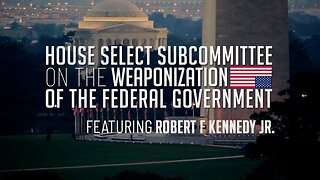 2:58:28
2:58:28
1 Nation Media
10 months agoHOLLYWOOD STYLE EDIT: WEAPONIZATION OF THE FEDERAL GOVERNMENT
556 -
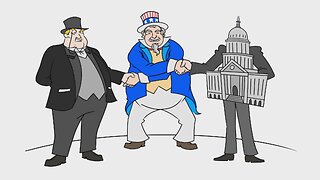 3:56
3:56
Mises Institute
1 year ago $0.07 earnedThe Military-Industrial Complex
4932 -
 3:02:01
3:02:01
The David Knight Show
1 year ago14Feb23 Could "Chemical Chernobyl" Happen in YOUR Town? Govt's Passive/Aggressive UFO Deception
3.14K14 -
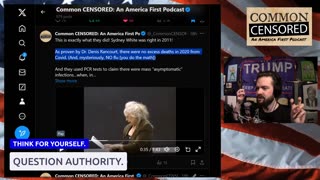 3:41:11
3:41:11
Common [CENSORED]: An America First Podcast
5 months agoEp.79 J6 PIPE BOMBER: EX-MILITARY W/ ACTIVE SECURITY CLEARANCE! FED PROVOCATEURS IN BORDER CONVOY
656 -
 5:31
5:31
Right Edition
1 year agoGovernment Control - Immigration & Planned Destruction
1793 -
 3:46
3:46
Reddit Tymes
11 months agoWhat s the most fucked up thing the US government has done? #usa #america #american #usgovernment
439 -
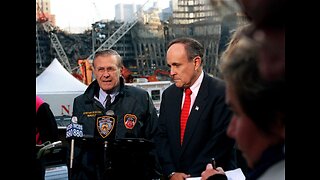 7:13
7:13
ZIGZAG Bureau of Investigation
10 months agoWORLD TRADE CENTER TWIN TOWERS (CFR) COUNCIL ON FOREIGN RELATIONS SEPT 11 2001 GROUND ZERO WASTELAND
1.94K12 -
 55:02
55:02
SheinSez
7 months agoBiden's "Patriot act" continues to work exacly as designed: to silence dissent-SheinSez 365
261 -
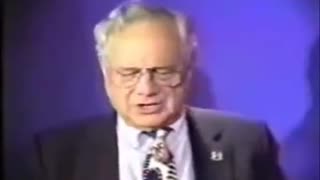 9:48
9:48
Hook Worm
10 months agoSandy Hook SMOKESCREEN - How Obama Planned to Blind Us With Terror Rampage' 2013
619 -
 3:01:07
3:01:07
The David Knight Show
4 months ago2Feb24 Groundhog Day: Another Exec Order for Gun Control; People Arrested for Resisting Jab Mandates
3.89K12